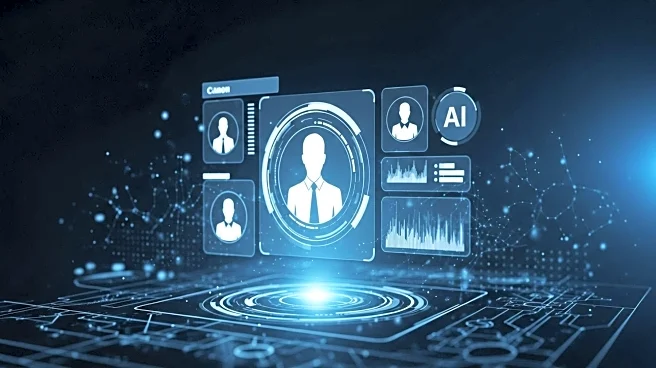What's Happening?
Activists have begun using artificial intelligence to identify Immigration and Customs Enforcement (ICE) officers, sparking political concerns over AI-powered surveillance. Dominick Skinner, an immigration activist based in the Netherlands, claims to have identified at least 20 ICE officials using AI technology that can reveal a face with only 35% visibility. This development has raised questions about the ethical use of AI in surveillance, especially as it mirrors techniques used by law enforcement agencies. The use of AI by activists to identify ICE officers has led to debates about privacy, accountability, and the potential for misuse of technology.
Why It's Important?
The use of AI to identify ICE officers highlights the growing tension between privacy rights and surveillance technology. This development could impact public policy and civil liberties, as it raises questions about the balance between security and privacy. The potential for AI to be used in digital vigilantism could lead to increased calls for regulation and oversight of surveillance technologies. Lawmakers and civil rights groups may need to address the ethical implications of using AI for identification purposes, especially when it involves government officials. The situation underscores the need for clear guidelines on the use of AI in surveillance to prevent misuse and protect individual rights.
What's Next?
The controversy surrounding the use of AI to identify ICE officers may lead to legislative efforts to regulate the use of surveillance technology. Lawmakers could propose bills to limit the use of AI in identifying government officials or to protect the privacy of individuals involved in law enforcement. Civil rights organizations may advocate for stricter oversight and transparency in the use of AI for surveillance. The debate is likely to continue as stakeholders consider the implications of AI-powered identification and its impact on privacy and civil liberties.
Beyond the Headlines
The ethical implications of using AI for surveillance extend beyond the immediate controversy. This development could set a precedent for how AI is used in other areas of law enforcement and public safety. The potential for AI to be used in digital vigilantism raises concerns about accountability and the potential for false identification. The situation also highlights the need for public discourse on the role of AI in society and the importance of establishing ethical guidelines for its use.











